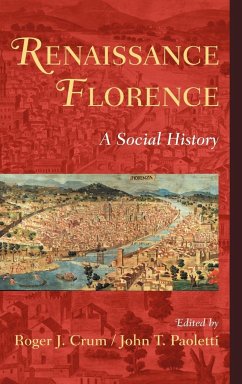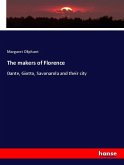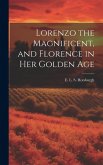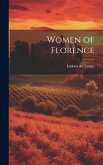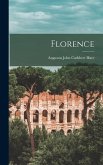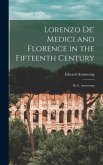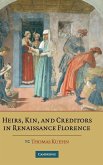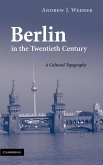Roger J. Crum / John T. Paoletti (eds.)A Social History
Renaissance Florence
A Social History
Herausgeber: Crum, Roger J.; Paoletti, John T.
Roger J. Crum / John T. Paoletti (eds.)A Social History
Renaissance Florence
A Social History
Herausgeber: Crum, Roger J.; Paoletti, John T.
- Gebundenes Buch
- Merkliste
- Auf die Merkliste
- Bewerten Bewerten
- Teilen
- Produkt teilen
- Produkterinnerung
- Produkterinnerung
An examination of the social history of Florence during the critical period of its growth and development in the early modern period, from the fourteenth through sixteenth centuries. The volume provides a multi-dimensional view of Florence as it evolved into an economic powerhouse and dynamic center of artistic achievement, as well as the setting for political and religious struggles. It also demonstrates how permeable boundaries between the disciplines of history and art history have become.
Andere Kunden interessierten sich auch für
![The makers of Florence The makers of Florence]() Margaret OliphantThe makers of Florence34,90 €
Margaret OliphantThe makers of Florence34,90 €![Lorenzo the Magnificent, and Florence in Her Golden Age Lorenzo the Magnificent, and Florence in Her Golden Age]() Lorenzo the Magnificent, and Florence in Her Golden Age42,99 €
Lorenzo the Magnificent, and Florence in Her Golden Age42,99 €![Women of Florence Women of Florence]() Isidoro Del LungoWomen of Florence38,99 €
Isidoro Del LungoWomen of Florence38,99 €![Florence Florence]() Augustus John Cuthbert HareFlorence36,99 €
Augustus John Cuthbert HareFlorence36,99 €![Lorenzo De' Medici and Florence in the Fifteenth Century: By E. Armstrong Lorenzo De' Medici and Florence in the Fifteenth Century: By E. Armstrong]() Edward ArmstrongLorenzo De' Medici and Florence in the Fifteenth Century: By E. Armstrong41,99 €
Edward ArmstrongLorenzo De' Medici and Florence in the Fifteenth Century: By E. Armstrong41,99 €![Heirs, Kin, and Creditors in Renaissance Florence Heirs, Kin, and Creditors in Renaissance Florence]() Thomas KuehnHeirs, Kin, and Creditors in Renaissance Florence108,99 €
Thomas KuehnHeirs, Kin, and Creditors in Renaissance Florence108,99 €![Berlin in the Twentieth Century Berlin in the Twentieth Century]() Andrew J. WebberBerlin in the Twentieth Century95,99 €
Andrew J. WebberBerlin in the Twentieth Century95,99 €-
-
-
An examination of the social history of Florence during the critical period of its growth and development in the early modern period, from the fourteenth through sixteenth centuries. The volume provides a multi-dimensional view of Florence as it evolved into an economic powerhouse and dynamic center of artistic achievement, as well as the setting for political and religious struggles. It also demonstrates how permeable boundaries between the disciplines of history and art history have become.
Hinweis: Dieser Artikel kann nur an eine deutsche Lieferadresse ausgeliefert werden.
Hinweis: Dieser Artikel kann nur an eine deutsche Lieferadresse ausgeliefert werden.
Produktdetails
- Produktdetails
- Verlag: Cambridge University Press
- Seitenzahl: 696
- Erscheinungstermin: 1. März 2010
- Englisch
- Abmessung: 235mm x 157mm x 45mm
- Gewicht: 1264g
- ISBN-13: 9780521846936
- ISBN-10: 0521846935
- Artikelnr.: 21903481
- Herstellerkennzeichnung
- Libri GmbH
- Europaallee 1
- 36244 Bad Hersfeld
- gpsr@libri.de
- Verlag: Cambridge University Press
- Seitenzahl: 696
- Erscheinungstermin: 1. März 2010
- Englisch
- Abmessung: 235mm x 157mm x 45mm
- Gewicht: 1264g
- ISBN-13: 9780521846936
- ISBN-10: 0521846935
- Artikelnr.: 21903481
- Herstellerkennzeichnung
- Libri GmbH
- Europaallee 1
- 36244 Bad Hersfeld
- gpsr@libri.de
Roger J. Crum is associate professor of art history at the University of Dayton, where he held the Graul Chair in Arts and Languages. He has received fellowships from the Kress Foundation (at the Kunsthistorisches Institut in Florence), the Newberry Library, and the Institute for Advanced Study. He is co-editor, with Claudia Lazzaro, of Donatello among the Blackshirts: History and Modernity in the Visual Culture of Fascist Italy and is working on a study of the Medici Palace and partisan politics in fifteenth-century Florence.
John T. Paoletti is professor of art history at Wesleyan University. He is the co-author of Art in Renaissance Italy, now in its third edition, and is completing a book on Michelangelo's David. He is a former editor of The Art Bulletin and has held a membership at the Institute for Advanced Study.
John T. Paoletti is professor of art history at Wesleyan University. He is the co-author of Art in Renaissance Italy, now in its third edition, and is completing a book on Michelangelo's David. He is a former editor of The Art Bulletin and has held a membership at the Institute for Advanced Study.
Introducion Roger J. Crum and John T. Paoletti; Part I. The Theatre of
Florence: 1. Florentine politics and urban spaces John M. Najemy; 2.
Theatres of everyday life Sharon T. Strocchia; Part II. The Public Realm:
3. The Piazza della Signoria as practiced place Stephen J. Milner; 4.
Structuring communal history through repeated metaphors of rule Sarah Blake
McHam; 5. Corporate beneficence and historical narratives of communal
well-being Philip Gavitt; 6. The spaces of plebian ritual and the
boundaries of transgression David Rosenthal; 7. Ritual trading at the
Florentine wool cloth botteghe Adrienne Atwell; Part III. Relatives,
Friends, and Neighbors: 8. Neighborhood as microcosm Nicholas Eckstein; 9.
The palace and villa as spaces of patrician self-definition Michael
Lingohr; 10. '... full of people of every sort': the domestic interior
Roger J. Crum and John T. Paoletti; Part IV. Men and Women: 11. Mean
streets, familiar streets, or the fat woodcarver and the masculine spaces
of renaissance Florence Guido Ruggiero; 12. Did women have a space? Natalie
Thomas; Part V. The Spaces of the Spiritual: 13. Sacred place and
liturgical space: Florence's renaissance churches Robert W. Gaston; 14.
Memorial chapels in churches: The privatization and transformation of
sacred spaces Jonathan Katz Nelson; 15. The aural space of the sacred in
renaissance Florence Peter Howard; 16. Identity and alliance: urban
presence, spatial privilege, and Florentine renaissance convents Saundra
Weddle; Part VI. Across Space and Time: 17. The workshop as the space of
collaborative artisitic production Anabel Thomas; 18. The replicated image
in Florence, 1300-1600 Patricia Emison; 19. From the workshop to the
academy: the emergence of the artist in renaissance Florence Andrea
Bolland.
Florence: 1. Florentine politics and urban spaces John M. Najemy; 2.
Theatres of everyday life Sharon T. Strocchia; Part II. The Public Realm:
3. The Piazza della Signoria as practiced place Stephen J. Milner; 4.
Structuring communal history through repeated metaphors of rule Sarah Blake
McHam; 5. Corporate beneficence and historical narratives of communal
well-being Philip Gavitt; 6. The spaces of plebian ritual and the
boundaries of transgression David Rosenthal; 7. Ritual trading at the
Florentine wool cloth botteghe Adrienne Atwell; Part III. Relatives,
Friends, and Neighbors: 8. Neighborhood as microcosm Nicholas Eckstein; 9.
The palace and villa as spaces of patrician self-definition Michael
Lingohr; 10. '... full of people of every sort': the domestic interior
Roger J. Crum and John T. Paoletti; Part IV. Men and Women: 11. Mean
streets, familiar streets, or the fat woodcarver and the masculine spaces
of renaissance Florence Guido Ruggiero; 12. Did women have a space? Natalie
Thomas; Part V. The Spaces of the Spiritual: 13. Sacred place and
liturgical space: Florence's renaissance churches Robert W. Gaston; 14.
Memorial chapels in churches: The privatization and transformation of
sacred spaces Jonathan Katz Nelson; 15. The aural space of the sacred in
renaissance Florence Peter Howard; 16. Identity and alliance: urban
presence, spatial privilege, and Florentine renaissance convents Saundra
Weddle; Part VI. Across Space and Time: 17. The workshop as the space of
collaborative artisitic production Anabel Thomas; 18. The replicated image
in Florence, 1300-1600 Patricia Emison; 19. From the workshop to the
academy: the emergence of the artist in renaissance Florence Andrea
Bolland.
Introducion Roger J. Crum and John T. Paoletti; Part I. The Theatre of
Florence: 1. Florentine politics and urban spaces John M. Najemy; 2.
Theatres of everyday life Sharon T. Strocchia; Part II. The Public Realm:
3. The Piazza della Signoria as practiced place Stephen J. Milner; 4.
Structuring communal history through repeated metaphors of rule Sarah Blake
McHam; 5. Corporate beneficence and historical narratives of communal
well-being Philip Gavitt; 6. The spaces of plebian ritual and the
boundaries of transgression David Rosenthal; 7. Ritual trading at the
Florentine wool cloth botteghe Adrienne Atwell; Part III. Relatives,
Friends, and Neighbors: 8. Neighborhood as microcosm Nicholas Eckstein; 9.
The palace and villa as spaces of patrician self-definition Michael
Lingohr; 10. '... full of people of every sort': the domestic interior
Roger J. Crum and John T. Paoletti; Part IV. Men and Women: 11. Mean
streets, familiar streets, or the fat woodcarver and the masculine spaces
of renaissance Florence Guido Ruggiero; 12. Did women have a space? Natalie
Thomas; Part V. The Spaces of the Spiritual: 13. Sacred place and
liturgical space: Florence's renaissance churches Robert W. Gaston; 14.
Memorial chapels in churches: The privatization and transformation of
sacred spaces Jonathan Katz Nelson; 15. The aural space of the sacred in
renaissance Florence Peter Howard; 16. Identity and alliance: urban
presence, spatial privilege, and Florentine renaissance convents Saundra
Weddle; Part VI. Across Space and Time: 17. The workshop as the space of
collaborative artisitic production Anabel Thomas; 18. The replicated image
in Florence, 1300-1600 Patricia Emison; 19. From the workshop to the
academy: the emergence of the artist in renaissance Florence Andrea
Bolland.
Florence: 1. Florentine politics and urban spaces John M. Najemy; 2.
Theatres of everyday life Sharon T. Strocchia; Part II. The Public Realm:
3. The Piazza della Signoria as practiced place Stephen J. Milner; 4.
Structuring communal history through repeated metaphors of rule Sarah Blake
McHam; 5. Corporate beneficence and historical narratives of communal
well-being Philip Gavitt; 6. The spaces of plebian ritual and the
boundaries of transgression David Rosenthal; 7. Ritual trading at the
Florentine wool cloth botteghe Adrienne Atwell; Part III. Relatives,
Friends, and Neighbors: 8. Neighborhood as microcosm Nicholas Eckstein; 9.
The palace and villa as spaces of patrician self-definition Michael
Lingohr; 10. '... full of people of every sort': the domestic interior
Roger J. Crum and John T. Paoletti; Part IV. Men and Women: 11. Mean
streets, familiar streets, or the fat woodcarver and the masculine spaces
of renaissance Florence Guido Ruggiero; 12. Did women have a space? Natalie
Thomas; Part V. The Spaces of the Spiritual: 13. Sacred place and
liturgical space: Florence's renaissance churches Robert W. Gaston; 14.
Memorial chapels in churches: The privatization and transformation of
sacred spaces Jonathan Katz Nelson; 15. The aural space of the sacred in
renaissance Florence Peter Howard; 16. Identity and alliance: urban
presence, spatial privilege, and Florentine renaissance convents Saundra
Weddle; Part VI. Across Space and Time: 17. The workshop as the space of
collaborative artisitic production Anabel Thomas; 18. The replicated image
in Florence, 1300-1600 Patricia Emison; 19. From the workshop to the
academy: the emergence of the artist in renaissance Florence Andrea
Bolland.

